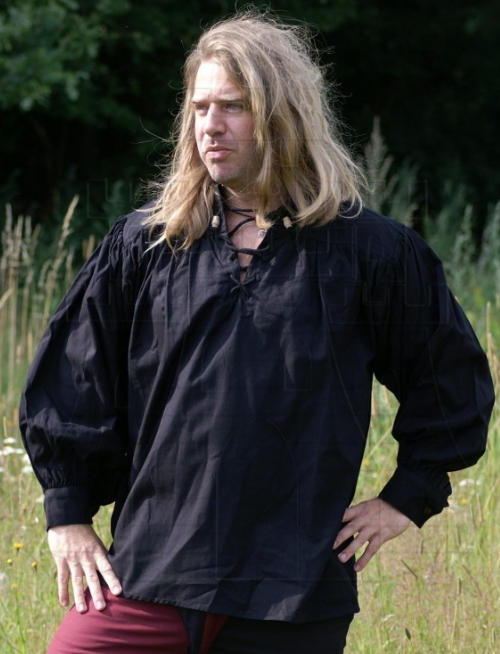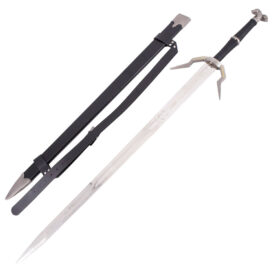The Rapier has a long and straight blade; It’s born in the Renaissance and it was used as an accessory for the clothes, that’s why in Spanish the name is “ropera”, as the word “ropa” means clothes. It was usually used as a self-defence weapon or just to be in style.
Its most important period was between 1525 and 1675 approximately. In the XVI century, in Spain, any sword worn with a civil or military suit, was named Rapier. Just the swords used for the battle weren’t Rapiers.
Actually we konw just two kinds of Rapiers: Swept Hilt Rapiers and Cup Hilt Rapiers. The first one is made by “rings”, long and not so thick, and a arch shape arch guard to protect the knuckles, one or two outside rings and many loops passing in the front or behind the grip.
Not all the elements must be presented in this sword, that’s why some people classify the Rapiers as one-quarter ring, half ring, three-quarter ring, whole ring, depending on the numbers of these elements. Sometimes the point of the oponent’s sword could pass trough the rings and hit the handling hand. For this, leather gloves were usually used to handle this kind of sword.
With the evolution of the fencing, it was needed a better protection for the end, that’s why the cup was installed giving the name “Cup Rapier” to the sword. It was giving a perfect level of protection to the hand, keeping the lightness of the sword. It was mainly used in Spain and in Italy, until the XVIII century. The Rapier and the Cup Rapier are light and easy to handle, even if they’re weapon with considerable sizes (some of the blades are more than 1 meter long), but nowadays the size depends on the height of the person. The Rapiers are extremely balanced and so very fast in the hands, perfect for the pratice of fencing.












